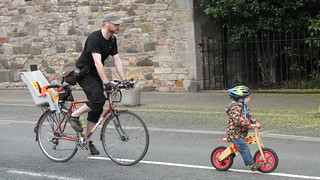T&E a Brussels-based lobby group commissioned a report which highlights the fact that there (scandalously) is NO EU BASE STANDARD for direct vision of the road outside for truck cabs and also NO EU REQUIREMENT for a COLLISION MANAGEMENT SYSTEM. Yet through this report they show that providing both features for a truck cab would deliver a reduction in truck operating costs and potentially halve the fatalities arising from collisions with a truck (estimated at over 3000 lives across the EU).
Part of the problem is apparently the EU regulations defining the overall length of the truck, rather than the length of the trailer, so that trucks in the UK have the aerodynamics of a brick, and are pared back to maximise the load carrying length. Crash tests between a car and truck at relatively low speeds dramatically show cosmetic damage to the truck and a totally flattened crumple zone on the car. There is no ENCAP testing for trucks or buses, and as a result the flat front of a truck pushes pedestrians and cyclists down, rather than throws them up and to the side like a sloping front on a car. making it highly probable the wheels will then run over the victim with a fatal outcome.
A 'cone' shaped front for a truck offers fuel savings plus better direct vision, a deflecting (to the side) of 'light' road users, and a crumple zone to save the lives of car occupants (maybe someone can find the numbers for cars run over and crushed in HGV crashes).
Here's the report
http://www.transportenvironment.org/sites/te/files/media/2012%2002%20smart%20trucks%20report%20briefing_final.pdf
Then a further paper from ECF highlights the fact that we are approaching a point in the EU legislative calendar where a wholesale revision of Truck design legislation will be taking place. Time indeed to lobby (MEP's) for taking this up?
http://www.ecf.com/wp-content/uploads/ECF-Cab-design-report_201112.pdf
Finally there are trucks which hauliers COULD buy where the driver's eye-line is just 2 metres (or less) above road level and cyclists easily in direct view all around the cab. They are built with better materials (alloy steel) and carry a price premium of typically 10-15%. Most are sold to airports and local councils (for refuse trucks), but could be used elsewhere, with the potential to offer significant fuel savings for some types of truck.
Here's the UK-made version
http://www.dennis-eagle.co.uk/elite2
and the German product

 posts
posts
